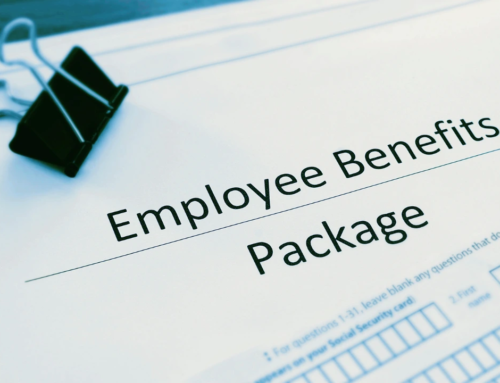Updated December 7, 2017
Employers in Pennsylvania are subject to some of the country’s most complex payroll tax laws. Pennsylvania is one of 43 states that have a state income tax and one of 14 states that have local taxes. In addition to withholding state and local income tax from employees’ wages, Pennsylvania employers must also comply with special tax rules.
For example, Pennsylvania is one of the few states that requires state unemployment tax withholding and does not fully follow federal law on pretax deductions. Pennsylvania has also established reciprocal agreements with six other states – which adds another layer of complexity to state withholding.
Here’s an overview of the unique withholding requirements in Pennsylvania and tips for remitting and reporting taxes.
State Income Tax Withholding
Federal law and some states require that employers use tax tables to figure income tax withholding. Pennsylvania, however, mandates a flat withholding rate of 3.07 percent for state income tax.
Pennsylvania employees generally do not have to fill out a state tax withholding form (the equivalent of a state W-4). But, those exempt from state income tax withholding must complete Form Rev-419 EX, Employee’s Nonwithholding Application Certificate – in which case, no state income tax should be withheld.
Local Income Tax Withholding
Employers with worksites, such as offices, factories, branches and warehouses, in Pennsylvania must withhold local Earned Income Tax (EIT) and Local Services Tax (LST) from their employees’ wages. To comply with local withholding rules:
- Use the Address Search Application to look up the political subdivision codes (PSD codes), which are based on the employee’s home and work addresses, and to find EIT and LST withholding rates. Refer to the instructions for using the Address Search Application.
- Complete the Residency Certification Form based on the information generated by the Address Search Application.
- Have the employee verify and sign the Residency Certification Form.
- Keep the Residency Certification Form in the employee’s personnel file. Fill out a new form if the employee notifies you of a name or address change.
The Pennsylvania Department of Community & Economic Development has helpful local withholding tax FAQs on its website that will answer the most common questions related to EIT and LST procedures.
Note about Unexpected Taxable Wages
In Pennsylvania, pretax deductions – such as Section 125 health insurance contributions – are not subject to state and local income tax. This is similar to the federal withholding process for pretax deductions. However, unlike federal law, contributions to traditional 401(k) plans are taxable in Pennsylvania and must be included in gross wages when calculating state and local income tax. To see other taxable wages under Pennsylvania law, refer to the Pennsylvania Personal Income Tax Guide.
State Unemployment Insurance (SUI) Tax Withholding
In most states, only the employer pays SUI tax. But in Pennsylvania, both employers and employees pay state unemployment tax, known as unemployment compensation (UC). For 2018, withhold Pennsylvania unemployment tax from employees’ gross wages at 0.06 percent. Employer rates are calculated differently and vary by employer. The Pennsylvania Department of Labor & Industry Office of Unemployment Compensation notifies employers annually of their contribution tax rate via mailed letter.
Pennsylvania’s annual taxable wage base, $10,000 for 2018, applies only to employer contributions. Therefore, employees in Pennsylvania are subject to unemployment tax withholding on all wages earned during the year.
Employers must register for UC coverage with the Pennsylvania Department of Labor & Industry Office of UC Tax Services and receive a UC account number or face a 3% penalty.
Reciprocal Agreements
Under a state reciprocal agreement, employees who live in one state but work in another state are not subject to withholding in their work state. But they must pay state income tax to their home state if the tax is imposed there.
Pennsylvania has a reciprocal agreement with the following states:
- Maryland
- Indiana
- Ohio
- New Jersey
- Virginia
- West Virginia
If an employee lives in Pennsylvania but works in any of those six states, her employer should not withhold state income tax for her work state, provided she submits the appropriate state withholding exemption form.
If the employee works in Pennsylvania but does not live there, her employer should not withhold Pennsylvania income tax from her wages, provided she submits Form REV-419 EX.
Employers in states with reciprocal agreements do not have to withhold income tax for the employee’s state of residence, but some employers do so as a courtesy. Note that Form REV-419 EX can be used to declare the employee as exempt from Pennsylvania income tax withholding and to authorize the employer to withhold income tax for the employee’s resident state.
Reciprocal agreements can be difficult to understand, so consult your payroll provider or CPA for guidance.
See Also: Essentials to Earning Work Opportunity Tax Credits
Remitting and Reporting Pennsylvania Taxes
State Income Tax
- Remit state income tax withheld to the Pennsylvania Department of Revenue on a quarterly, monthly, semimonthly or semiweekly basis. Each payment schedule has different criteria, so review the employer withholding page of the Pennsylvania Department of Revenue website to determine your payment frequency.
- Report state income tax withheld to the Pennsylvania Department of Revenue by filing quarterly reconciliation returns (PA-W3) on or before the last day of April, July, October and January for each three-month period.
Local Income Tax
- Pay and report local income taxes withheld to your local tax collector quarterly, within 30 days after the end of each quarter. Employers with multiple worksites falling within multiple tax municipalities can register to remit to a single tax collector but must pay and file monthly. To determine your local tax collector, review the report generated by the Address Search Application.
State Unemployment Tax
- Remit and report state unemployment tax withheld and employer contributions to the Pennsylvania Department of Labor and Industry quarterly, by April 30, July 31, October 31, and January 31.
State and Local W-2 Requirements
Report the following in boxes 16 – 19 of each employee’s annual W-2 form:
- State (taxable) wages
- State income tax (withheld)
- Local (taxable) wages
- Local income tax (withheld)
File W-2s with the Pennsylvania Department of Revenue by January 31– this rule stands regardless of federal filing deadlines. Include state form W-2 Transmittal (REV-1667) when submitting W-2s. The state provides W-2 filing instructions for employers.
Note: The federal filing deadline for 2017 W-2s is January 31, 2018, the same day W-2s are due to your employees.
Additionally, submit W-2s and W2-R Annual Reconciliation Form to your local tax collector by the last day of February.




